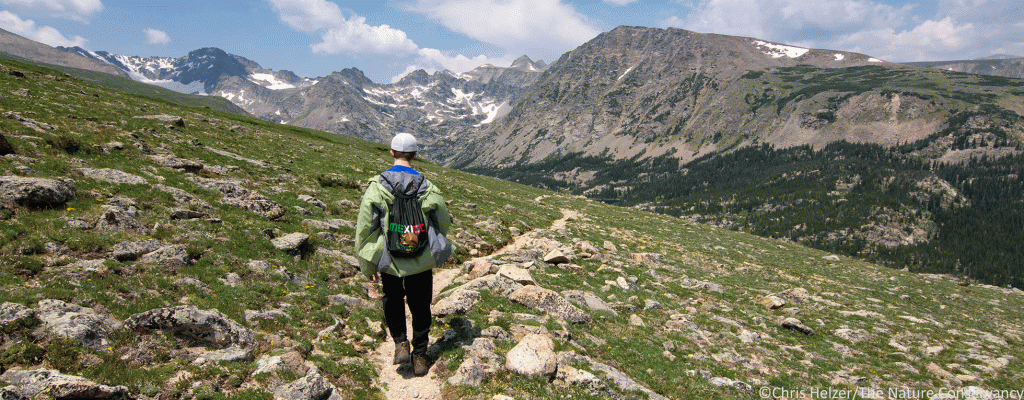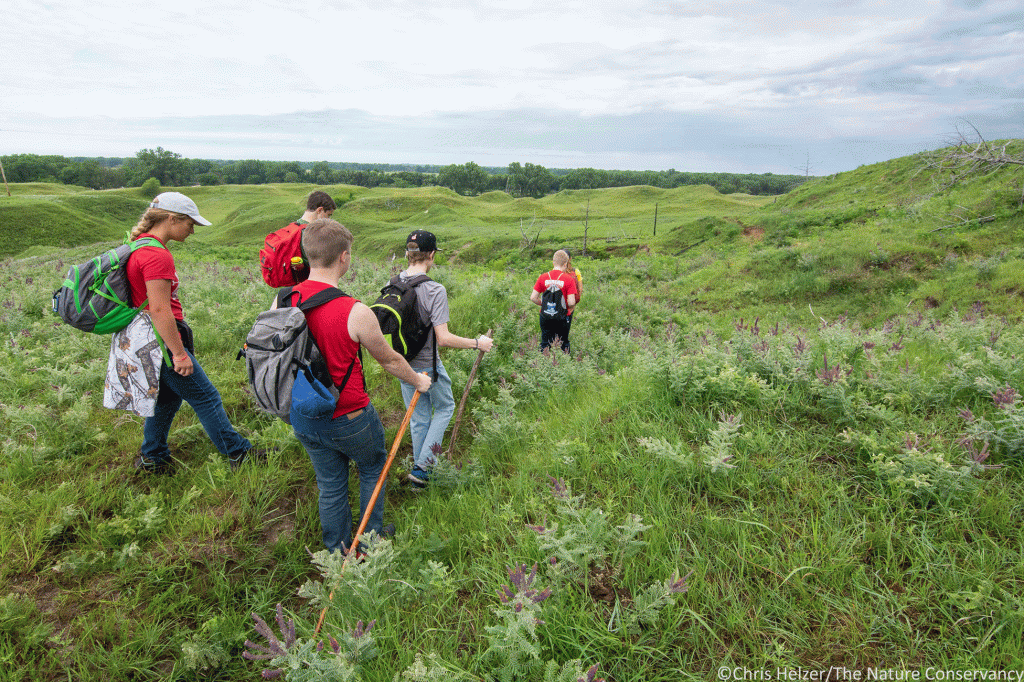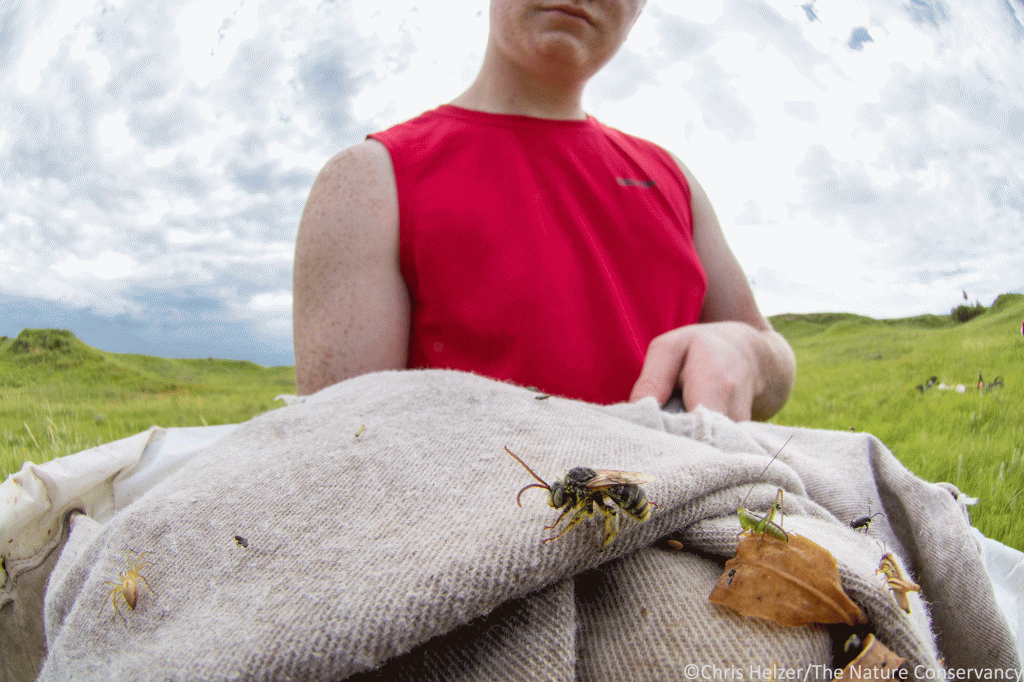I took my son Daniel on a backpacking trip to Colorado last week. The biggest reason I wanted to do that was to carve out some serious one-on-one time with him, which worked out wonderfully. However, I also hoped to add to the list of ‘defining moments’ he’s had in nature. I’m pretty sure that was also accomplished.

I’m not sure if ‘defining moments’ is the exact term I’m looking for here, but what I’m talking about are those events that become significant and permanent positive memories for us. The ones brought up at family gatherings or mentioned during a discussion with friends about significant life experiences. Everyone has those memories; winning a big game, our first kiss, or the first day at a new school or job site.
From a conservation standpoint, we need people to have ‘defining moments’ that include positive experiences with nature – visceral memories that will pop up in their minds when the topic of conservation arises. When they see a news story about prairies being plowed up at record rates, we need people to remember finding a nest of adorable meadowlark chicks or seeing the incredible and wonderful diversity of invertebrates emerging from a sweep net as a naturalist pointed out particularly interesting individuals.
I’m confident my kids have had plenty of those defining moments. They’ve had enough days at work with me or family trips in nature to ensure a conservation ethic is embedded within their brains. I feel great about that, and any additional experiences now are purely icing on that cake.
However, not everyone has ecologists for parents. Not everyone takes regular family vacations in national parks or even gets the chance to hike through a prairie or woodland in the county they live in. In fact, some people haven’t ever had a positive experience with anything they would consider ‘nature’. That’s a huge problem.
There are lots of ways to get people to care about conservation, including (I hope!) deluging them with pretty photos of birds, flowers, and butterflies, accompanied by fascinating stories about the lives of those organisms. Sharing facts about the importance of nature to the everyday lives of humans is good too, including the ways in which healthy ecosystems provide clean air and water, as well as food and other vital resources we need. However, there’s no substitute for personal experience. A ‘defining moment’ that evokes joy, wonder, and pleasure when it’s remembered later might be the most powerful way there is to create a conservation advocate.

My conviction about the importance of defining moments in nature is why I almost never say no to opportunities to lead tours or otherwise interact with people – especially kids – in prairies or other natural settings. It can be hard to quantify the return on my time investment, of course, but I firmly believe in the value of helping people have positive and memorable experiences in nature. If I have to do that 3-5 kids at a time, so be it. However, it’s nice to know countless others are working on this same effort.
During college, I worked as a teacher/naturalist at a local nature center, and regularly led groups of kids and adults on discovery hikes along the center’s trails. We did other programming too, but most of my favorite memories come from hikes for which the main objective was to simply explore and discover – and my role was to facilitate that and help interpret what the hikers found.

I’d love to know what memories stuck in the minds of the kids I interacted with back then. Do they still remember watching a spider wrap up a grasshopper in its web? Do they remember seeing the leaves of sensitive briar fold up when they touched them? Can they still hear the sounds of birds, bees, katydids, and countless other creatures that surrounded us while we closed our eyes and tried to just listen deeply?
Since those days at the nature center, my opportunities to help kids and adults create defining moments have been much more sporadic, but I still see them as a key part of my conservation career. When I lead tours or workshops on plant identification or prairie management, I will always stop to admire and rhapsodize about a toad, spider, grasshopper, or anything else we come across that I think might be of interest to my audience. I never know what might lodge in someone’s brain and become one of the ‘defining moments’ that turns them into a conservation advocate.

Great post today — brought back memories of hiking in the sandhills during my growing up years. So fortunate to have parents who taught me the values of nature.
So true! I am grateful when my daughters bring up the childhood memories in nature they experienced with me.
This is a wonderful article. Thank you!
Sarah Geurtz, PLA
Landscape Architect
EDA
A knowledgeable and inspiring teacher is obviously important in any profession; or any hobby for that matter. Which is why it’s very difficult to be a good teacher and why being a teacher isn’t (and shouldn’t be) for everyone.
Specifically regarding nature, I’m afraid one will have to write off the peoples living in the world’s mega-cities. Which of course is one of the major problems for nature as an ever increasing majority of the world’s populations actually live in cities.
My son and I are studying your photo taken along the Arapaho Glacier Trail. We know that trail well in the Indian Peaks Wilderness. Is it possible the photo is reversed? Seems like as you descend, you would see those peaks to your right. They are on the continental divide.
Would like to be there right now!
Always enjoy your posts.
Nancy
On Wed, Jul 21, 2021 at 10:33 AM The Prairie Ecologist wrote:
> Chris Helzer posted: ” I took my son Daniel on a backpacking trip to > Colorado last week. The biggest reason I wanted to do that was to carve out > some serious one-on-one time with him, which worked out wonderfully. > However, I also hoped to add to the list of ‘defining moments” >
Nancy, our hike started at the Rainbow Lakes trailhead and hiked to treeline and then another mile and half to the west before starting back. This photo was taken on our way back toward treeline in a part of the trail that was heading mostly north before cutting back east. The mountains in the background with snow on them are to the west of Goose Lake (and might include Arikaree Peak?). Hope that helps! It was really a wonderful spot and we hope to go back when we’ve got the time to hike further in.
I think any child that is in your presence will be blessed with many fond and informed memories.
Spot on! If we don’t lead them to love our natural resources, they will not be interested in preserving it when we are gone.
I think trying to create defining moments to connect people with natural places is indeed challenging, but so important. I participated in a multi-day group hike though the Loess Hills that I think did this very well.
https://www.bleedingheartland.com/2021/06/23/finding-a-path-for-people-and-wildlife-in-the-loess-hills/
It’s impressive to see how you go about restoring the remnant prairie on your property. And the main reason why the Pasque flower has become locally abundant is without doubt because of the two prescribed burns. All Pulsatilla species are very favored by fire.
And what you term “restorative recreation” is what I call common sense.
Participating in a nature producing activity is what many more people should be doing; instead of just wasting time and money on insane activities like flying to space for a few minutes or other mindless or destructive activities. But unfortunately these billionaires obviously don’t have any common sense at all.
Thank you for your kind words.
Pingback: Creating “Defining Moments” in Nature
Chris, I could not agree more with your post! As an environmental educator who worked with school aged children for many years, most of my lessons incorporated some type of awe-inspiring experience – whether it be the miraculous metamorphosis and migration of a monarch or carnivorous plants, or the excitement of bulbs breaking through the ground in the spring, awe can captivate. I’ve had former students comment to me years past their experience about how it shaped them and their need to be good environmental stewards. Thank you for providing these defining moment experience to both your own children and others.
I remember my first defining moment in nature as though it were yesterday. I was in grade school, and an eager participant in our church’s vacation Bible school. One summer, my class teachers used a hymn written by Maltie Babcock (b.1858-d.1901) for our ‘text.’ A representative verse goes like this:
“This is my Father’s world:
The birds their carols raise,
The morning light, the lily white,
Declare their Maker’s praise.
This is my Father’s world:
He shines in all that’s fair;
In the rustling grass I hear Him pass,
He speaks to me everywhere.”
Each day for two weeks, we took a line of the hymn and headed outdoors, where we searched for whatever the day’s line mentioned: birds, lilies and other flowers, grasses. They even had us pay attention to the different light on sunny days and cloudy. When I think about it now, I’m astonished that a couple of volunteer mothers came up with the idea — there was no formal curriculum — but the fact that I remember it so well more than 60 years later, is proof that anyone can provide an impressionable child with a life-long sensitivity to the natural world.